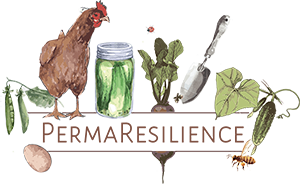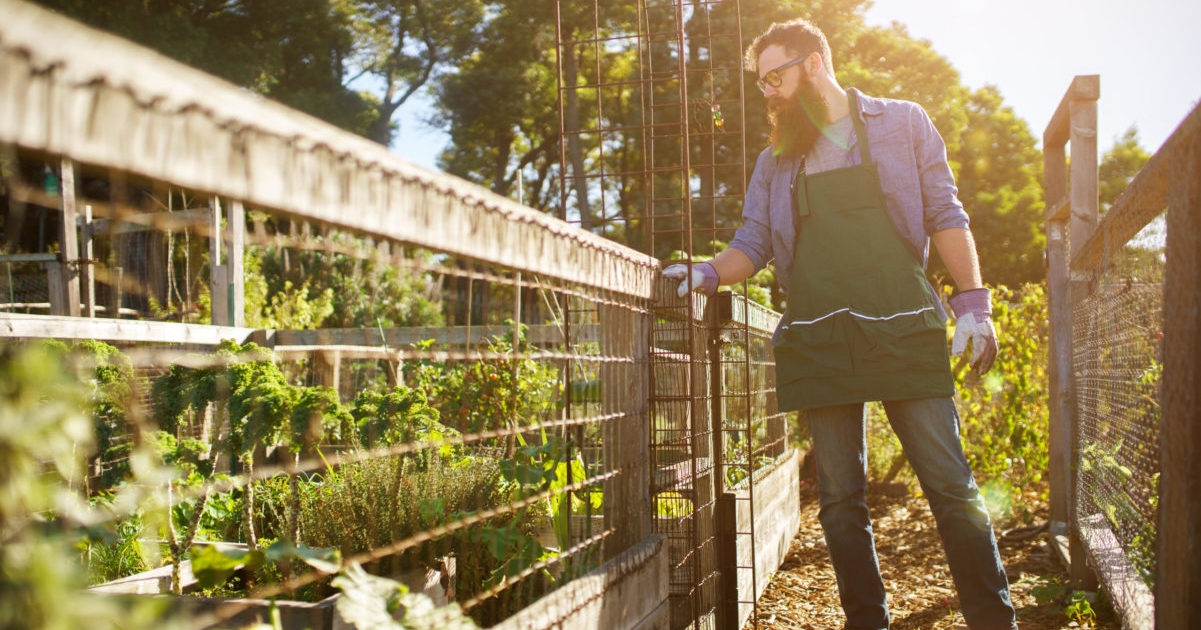The P3 Permaculture Method is the newest and easiest way to use permaculture to create self-sustainable gardens and modern homesteads so that you can have that home-grown life (no matter how much space or land you have)!
Video Transcript:
We slow down and learn what permaculture has to teach us about the goal. We take a minute to plan it out.
I want to set the stage for you so that way you can get the most out of permaculture. It’s likely, not clear how to exactly to apply permaculture. You see, the topic of permaculture can seem confusing and overwhelming to some people, myself included at first. So, I developed what I call the P3 permaculture method.
Now, the P3 method is my unique system that takes the mountain of information that is permaculture and breaks it apart, and reorganizes it into three smaller, more specific, and focused phases that answer how to apply permaculture. With this method, you ensure your success by doing the right things in the right order, in the right place, and at the right time.
So, let’s break down the P3 method. The first phase is “Learn,” the second phase is “Plan,” and the third phase is “Apply.” And when you use the learn-plan-apply model, you get confident, clear results every time.
Now, some of you might be thinking, “Wait, I just wanted to learn about creating a permaculture garden, why do I need this?”
Well, you already know that traditional gardening or conventional gardening is toxic. Using pesticides, the soil life is destroyed when it’s tilled. That tilling creates weak and unhealthy plants that are more susceptible to pests and so on and so forth. And you also know that with permaculture, we grow food in a completely different way, right?
Well, that’s what the P3 method is about. We slow down and learn what permaculture has to teach us about the goal, be it creating an ecological garden or a rainwater harvesting system.
We take a minute to plan it out, choose the appropriate tools and strategies, and once both of those are done, we can then move into applying the permaculture tools into the landscape successfully and efficiently the first time. Because when we don’t take a pause here and learn, plan, and apply, is when we begin making mistakes that will, in the long run, cost us time, energy, and money. Money, such as accidentally locating a greenhouse in the wrong place or orienting it in the wrong direction.
Alright, with that said, we can go one level deeper. So, let’s take a look at permaculture from the perspective of P1, the learning phase, and we’ll look at some of the defining tools that make permaculture, well, permaculture now.
The next thing that I want to show you is the idea, the tool for creating connections between elements on a site. Now, this can also be said to close the loops. So, to apply permaculture to anything, what we do is try to close loops. There are open loops and there are closed loops.
Now, an open loop requires manual input for something like energy, and a closed loop requires no manual input for energy. Think about a lawnmower, this requires gas from you to keep going. That’s an open loop. Now, think of a solar-powered calculator. That’s a closed loop, right? It requires no energy from you to keep functioning.
So, look at this regular house. Do you think this is an open or closed loop? Yes, it’s an open loop. The house is not self-sufficient. Power, gas, water, and sewer, are all tied to the grid. Food comes from the grocery store. Money and time go into things that produce no yield, like mowing a lawn or watering purely ornamental plants. This is not permaculture. This is not sustainable, and this is not a closed loop.
Now, look at this. Isn’t this much better? Here, we’ve started closing the loops on this house. The ornamental landscape is now an edible landscape. The home harvests rainwater. It houses animals for food and land management. And notice that the level of time, money, and energy, in the long run, are drastically reduced because this home is more self-reliant. It’s actually producing and not just consuming.
Now, is that making some sense? So, to find the loops to close, we just look for where time, money, or energy are wasted.
Now I will mention that the permaculture design process has a framework for finding these open Loops. Plus, learning all of the possibilities that are in the permaculture toolbox can open your eyes to the ways in which Loops can be closed. This is the kind of stuff that you won’t find on YouTube. It’s the why and the how and the strategies and tools that actually make permaculture work, make it efficient, and make it sustainable.
So, next let’s look at an even more specific example, a garden because this is where I want you to start. So, how do you apply permaculture to the garden? Well, here’s a conventional garden, it’s an open loop. Now, just to say real quick, I am not necessarily knocking conventional gardening. It’s way better than say, a manicured landscape, but a conventional traditional garden can be way better than that.
So, just like your lawnmower, this garden requires massive input. It isn’t exactly the healthiest and it’s likely harmful to the environment. You have to bring in all of your gardens needs from compost, soil amendments, pest control, water, seeds, and so on. You have to give all of your energy every season to things like tilling and weeding, and you do this every season over and over again.
So, let’s apply some permaculture to this garden. Alright, ah, this is much, much better. We started closing the loops, which is as simple as making connections to other things on the site. For example, kitchen scraps go into the garden to create compost.
The wood stove from the house can provide wood ash for the garden, which adds phosphorus and potassium, two of the three major nutrients plant needs. Or we can connect the chickens to the garden so that way they can make piles of compost, or we can connect ducks to the garden. They can provide pest control. We could add cover crops and build untilled soil for you so that way you don’t have to.
Don’t get me wrong here, a permaculture garden is still some work, especially in the beginning when you’re making all these connections and setting it up. But in the long run, it’ll be less work with more yield. For example, we never till our garden because permaculture gave us the tools like deep mulching. I saved dozens of hours a year because of that one strategy, and I keep my soil healthier in the process of doing so.
Alright, is that making sense? We close loops by making connections, and permaculture has the tools to do this. When we’re closed loops, we’re leveraging the power of permaculture to save time, money, and energy while reducing our carbon footprint and creating self-sufficiency.








